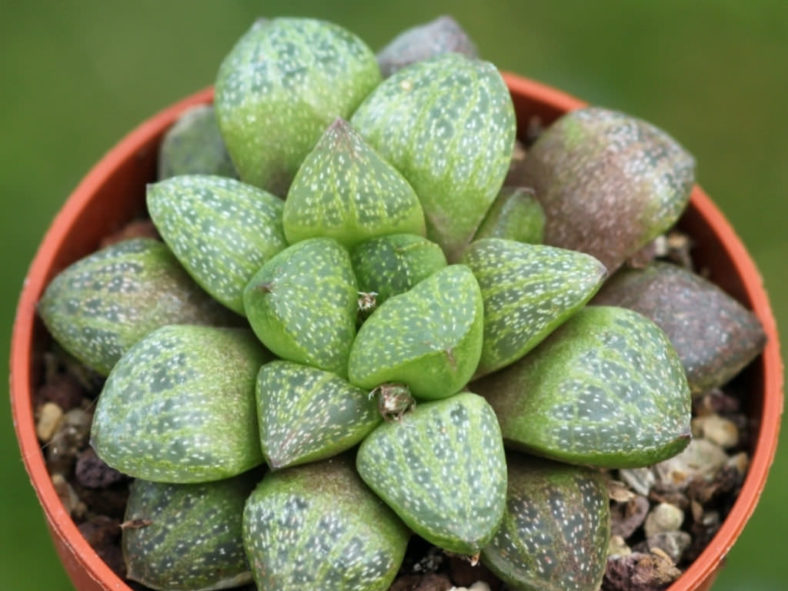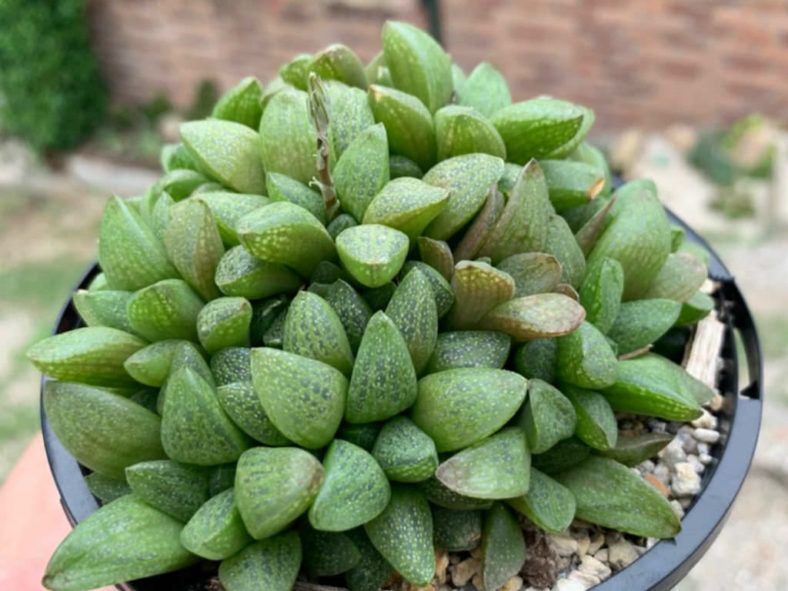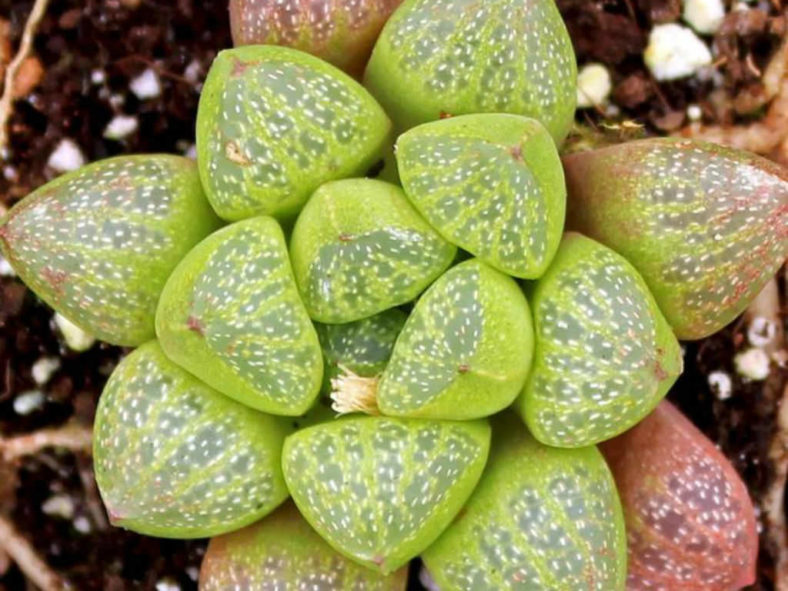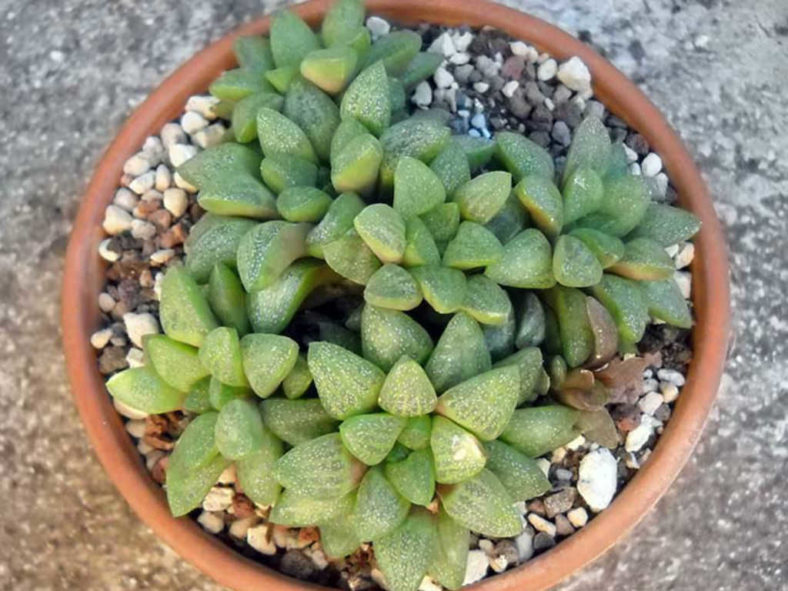Scientific Name
Haworthia turgida var. suberecta Poelln.
Synonym(s)
Haworthia retusa var. suberecta, Haworthia suberecta, Haworthia turgida f. suberecta
Scientific Classification
Family: Asphodelaceae
Subfamily: Asphodeloideae
Tribe: Aloeae
Genus: Haworthia
Etymology
The specific epithet "suberecta" (pronounced "sub-er-EK-tuh") means "somewhat upright" and refers to the nearly erect leaves of this variety.
Origin
Haworthia turgida var. suberecta is native to South Africa. It occurs from Albertinia to Brandwacht in the Western Cape province.
Description
Haworthia turgida var. suberecta is a small succulent that forms a dense clump of stemless rosettes of fleshy, suberect, usually truncated and rounded leaves with 3 to 7 green longitudinal lines and strongly mottled with semi-translucent dots. This variety is distinguished from Haworthia turgida var. turgida by its truncated and rounded leaf tips. The rosettes can grow up to 6 inches (7.5 cm) in diameter and produce offsets, forming a dense clump over time. The leaves are usually pale green but can take on red hues when moderately stressed by heat and drought. They can measure up to 1.2 inches (3 cm) long and up to 0.5 inches (1.3 cm) wide.
The flowers are brownish-white with darker veins and appear on slender stalks that can reach up to 8 inches (20 cm) in length.

How to Grow and Care for Haworthia turgida var. suberecta
Hardiness: USDA hardiness zones 10a to 11b: from 30°F (-1.1°C) to 50°F (10°C).
These succulents are not considered difficult to grow as houseplants. If you can keep a pot of Aloe alive on a windowsill, chances are you can do the same with a dish of Haworthia. As with all succulents, the most dangerous situation is overwatering. They should never be allowed to sit in water under any circumstances. At the same time, these little decorative plants can be grown in interesting containers such as teacups and even miniature baby shoes. If you're given a Haworthia in such a container, ensure the container has adequate drainage.
Haworthias are small, usually between 3 and 5 inches (7.5 cm and 12.5 cm) in height, and relatively slow-growing. Therefore, they are often grown in small clusters in wide, shallow dishes. Over time, clusters will naturally enlarge as the mother plant sends off small plantlets. When the cluster has outgrown its container, repot into a new, wide, shallow container with fresh potting soil in the spring or early summer. This is also the time to take offsets for propagation.
Learn more at How to Grow and Care for Haworthia.
Links
- Back to genus Haworthia
- Succupedia: Browse succulents by Scientific Name, Common Name, Genus, Family, USDA Hardiness Zone, Origin, or cacti by Genus
Photo Gallery
Click on a photo to see a larger version.


